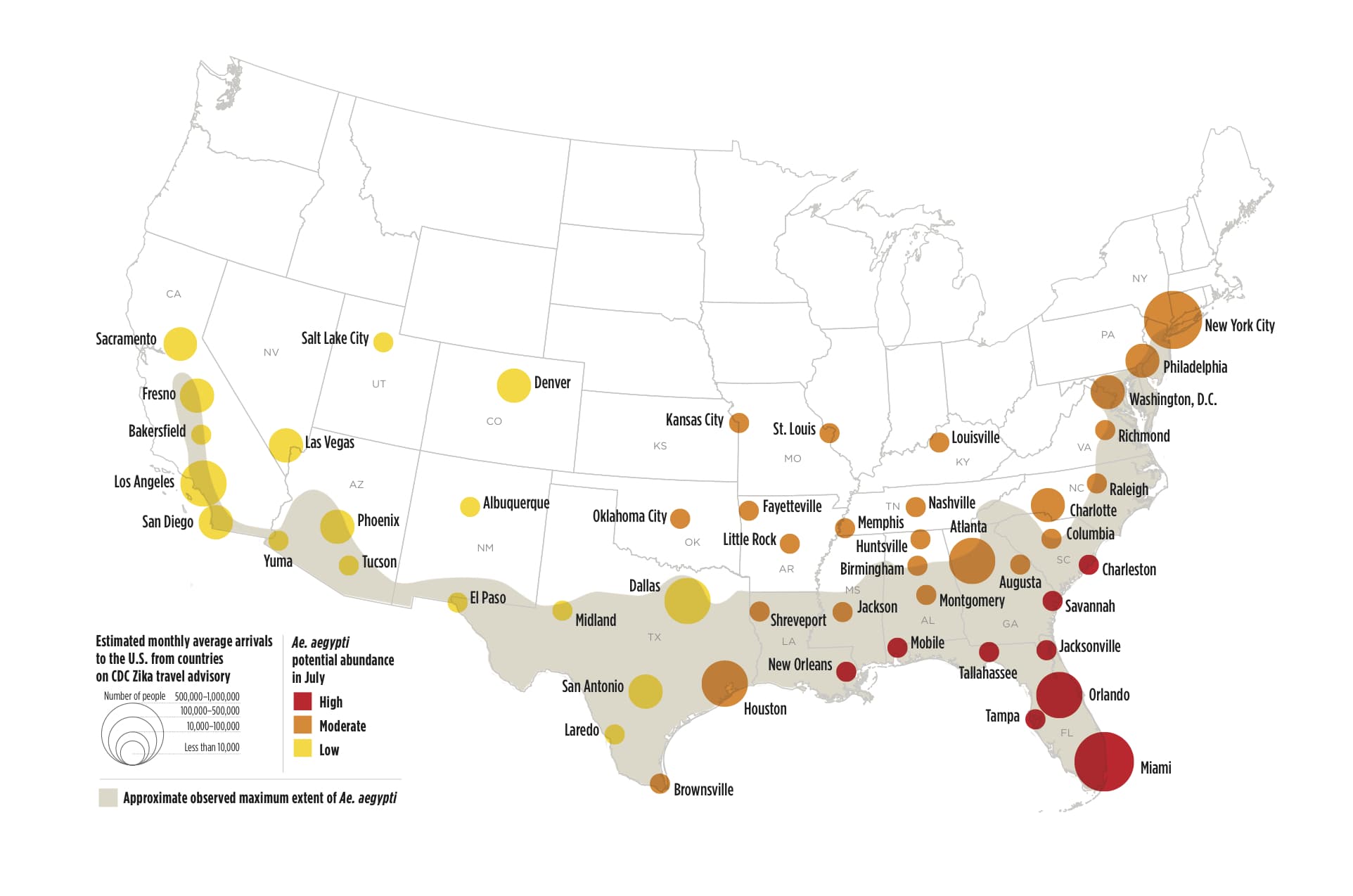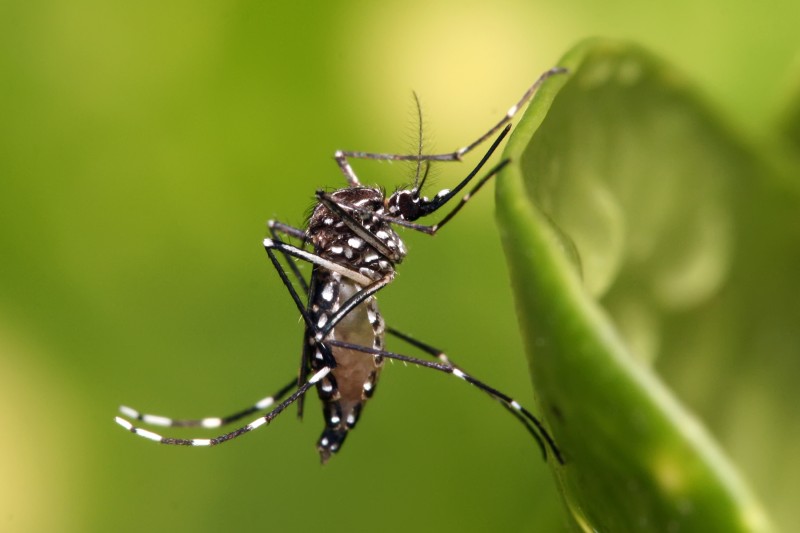Study Pinpoints 50 US Cities Vulnerable to the Zika Virus
OutdoorHub Reporters 03.21.16

If you are planning on being outside this summer, you may want to double up on the mosquito repellent. Earlier this year the US Centers for Disease Control and Prevention (CDC) issued travel warnings for US citizens planning on visiting countries affected by the Zika virus. However, researchers say it is only a matter of time before the virus enters the United States itself. So far 258 people in the country have been hospitalized with the virus, and experts say that with warming weather and an abundance of mosquitoes, conditions are favorable for the virus to spread. A recently published study conducted by the National Center for Atmospheric Research (NCAR) found that the Aedes aegypti mosquito, which is currently spreading the Zika virus in Latin America and the Caribbean, will soon become abundant from Sacramento to New York.
“This research can help us anticipate the timing and location of possible Zika virus outbreaks in certain U.S. cities,” said NCAR scientist Andrew Monaghan, lead author of the study, in a press release. “While there is much we still don’t know about the dynamics of Zika virus transmission, understanding where the Aedes aegypti mosquito can survive in the U.S. and how its abundance fluctuates seasonally may help guide mosquito control efforts and public health preparedness.”
The Zika virus, which was first discovered in Uganda in 1947, is an infection similar to a mild form of dengue fever. According to the CDC, common symptoms include fever, rash, joint pain, muscle pain, and headaches. Most people infected with the virus will not display symptoms at all. However, what is most concerning about the virus, especially after the recent outbreak in Latin America, is its association with microcephaly, a medical condition that causes intellectual and physical disabilities in children. Pregnant women infected with the virus can pass the disease onto their fetus, and men can spread the virus to their sexual partners. It is not known if the Zika virus actually causes microcephaly.

“In addition to microcephaly, other problems have been detected among fetuses and infants infected with Zika virus before birth, such as absent or poorly developed brain structures, defects of the eye, hearing deficits, and impaired growth,” stated the CDC. “Although Zika virus has been linked with these other problems in infants, there is more to learn. Researchers are collecting data to better understand the extent Zika virus’ impact on mothers and their children.”
Given the panic in South and Central America over the 2015 Zika outbreaks, more than a few people in the United States are worried as well. However, NCAR researchers say that even if the virus does establish a foothold in the country, it is unlikely that it will spread as far as it did elsewhere. This is due to largely to the technological and medical capabilities of the US compared to other countries, as well as the prevalence of air-conditioned homes. However, researchers do note that it is very likely for this summer to be warmer than average, leading to higher mosquito populations in states such as Florida, Georgia, South Carolina, Alabama, and Louisiana.
“Generally, the mosquitoes need warm and relatively stable temperatures, as well as water-filled containers such as buckets, barrels or tires, for their eggs to hatch. Once a mosquito bites an infected person, it also needs to live long enough—probably a week or more, depending on ambient temperatures—for the virus to travel from the mosquito’s mid-gut to its salivary glands. Once in the saliva, the virus can then be transmitted if the mosquito bites another person,” stated the National Science Foundation, which helped fund the study.
The study used computer models to simulate how weather conditions will affect the growth of mosquitoes in the 50 major cities in the insect’s historical range. Warm temperatures may favor Aedes aegypti on the East Coast, but in the parched West, a hot summer is expected to put a damper on the mosquito population. Click here for a larger version of the featured map.
Weather is not the only factor in the spread of mosquitoes either. Travel from Zika-affected areas, poor sanitation, houses without air conditioning, and even poverty should be taken into account when preparing for the Zika virus, researchers say.
“We hope that others will build on this work as more information becomes available. All areas with an environment suitable to the establishment of Aedes aegypti should be working to enhance surveillance strategies to monitor Aedes aegypti populations and human populations for disease emergence,” said Kacey Ernst, co-author of the study.

